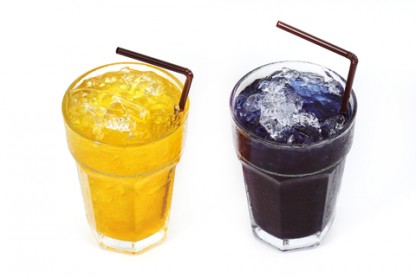Top Foods to Avoid with ADHD
 Attention deficit hyperactivity disorder (ADHD) is the most common childhood psychiatric disorder in the United States. Children diagnosed with ADHD have trouble paying attention and experience hyperactivity and impulsivity. Most children with ADHD are treated with psychostimulant medications, but these come with unpleasant side effects and significant risks including appetite loss, headaches, and decreased growth.[1]
Attention deficit hyperactivity disorder (ADHD) is the most common childhood psychiatric disorder in the United States. Children diagnosed with ADHD have trouble paying attention and experience hyperactivity and impulsivity. Most children with ADHD are treated with psychostimulant medications, but these come with unpleasant side effects and significant risks including appetite loss, headaches, and decreased growth.[1]
Although the exact cause of ADHD is unknown, research suggests that some children with ADHD may be hypersensitive to specific food items, especially food additives.[1] Learning what foods to avoid with ADHD can help many children manage their symptoms better.
Preservatives and food dyes can worsen ADHD symptoms
Artificial food dyes and preservatives are prevalent in many processed food items. The association between food additives and ADHD has been a topic of controversy since the 1970s, but many studies have concluded that childhood hyperactivity is associated with consumption of preservatives like sodium benzoate [1,2,3] as well as artificial food coloring.[4]
The effects are not limited to young children: A 2014 study found that college students who drank a lot of soft drinks rich in sodium benzoate had increased ADHD symptoms.[5]
Even kids without ADHD may react to these additives. A study found that artificial food colors, sodium benzoate, or a combination of the two resulted in increased hyperactivity in both 3 year olds and 8/9 and year olds without an ADHD diagnosis.[3] As one author states, sensitivities to these additives “is not confined to the ADHD population but is instead a general public health problem.”[1]
Determine what foods or additives your child is sensitive to
Researchers suggest that many children with ADHD can improve significantly by eliminating artificial additives.[1] Try removing all additives from your child’s diet, including artificial colors, artificial flavors, and preservatives for two weeks. Common foods and drinks that contain additives include soft drinks, juices, pudding, salad dressings, soup, and cookies. Even white frosting can contain artificial coloring to make it look whiter. Read all ingredient lists to be sure.
Many children can also be sensitive to foods such as gluten, corn, soy, milk, eggs, sugar, and legumes, so an elimination diet can also provide important dietary information.[1]
Keep track of how your child responds. Following the two weeks, reintroduce small amounts of certain foods to test for sensitivity. Monitor your child for increased hyperactivity or other ADHD symptoms. If a food causes a reaction, remove it from your child’s diet for good.
In place of packaged foods full of additives, prepare fresh, whole foods for your child. Try out these 30 Easy, Healthy Recipes to get started.
Share your experience
Do you know someone who has ADHD or do you have a child with ADHD? What are your tips for managing symptoms? Please share your story in the comments section below.


 Vegan Diet Better Than Omnivore Diet for Cardiovascular Health
Vegan Diet Better Than Omnivore Diet for Cardiovascular Health  10 Terrific Natural Diuretics
10 Terrific Natural Diuretics  Ask the EN Experts January 2024
Ask the EN Experts January 2024 